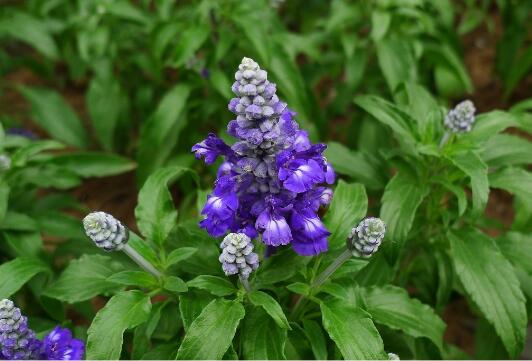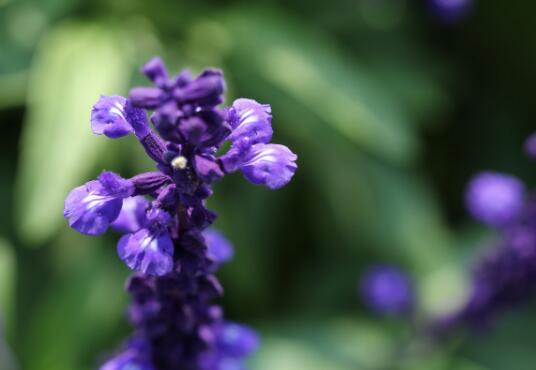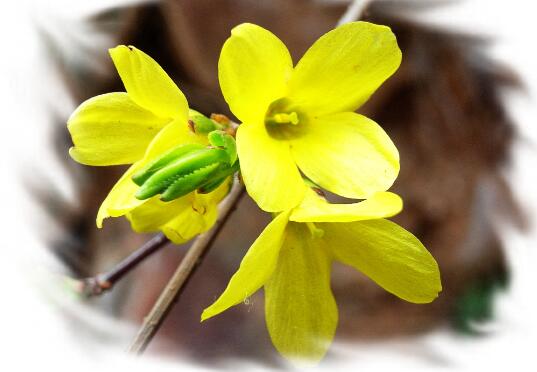When to sow sage, the planting method of sage / sowing in spring and autumn
Among the propagation methods of sage, sowing and reproduction is a more commonly used method, but if we want to sow successfully, we need to pay attention to many points. About when sage will be sown? What is the planting method of sage? Next, the editor will take you to learn about it.
When will sage be sown in spring and autumn

When we sow and reproduce sage, it is very important to choose the right time. When it comes to the most suitable time to sow sage, we can choose spring and autumn because the climate of these two seasons is more suitable for its growth, so the survival rate will be relatively higher.
Second, the planting method of sage
1. Matrix selection, neutral or slightly alkaline soil
Before we sow and propagate sage, we must first choose the substrate. Generally, it is best to choose loose and fertile neutral or slightly alkaline soil as the substrate, because this kind of soil has better drainage, can better absorb nutrients, and is not prone to stagnant water.
two。 Matrix disinfection, high temperature disinfection
After we have selected the substrate of sage, we also need to disinfect it so that there are diseases and insect pests lurking in it. During disinfection, we can break it up and put it in the sun to disinfect it, or we can put it in a pan and stir-fry it so that any diseases and insects can be scalded to death.
3. Seeds are precipitated and soaked in warm water.
Because the seed shell of sage is relatively hard, it is best to soak it in warm water of about 40 ℃ before sowing for about 1-2 days. When the seed begins to absorb water and swell, take it out and plant it, which can promote it and make the seed germinate faster.
4. Sowing method, seedling emergence in 10-15 days
Before we sow and reproduce sage, we should first apply an appropriate amount of base fertilizer to the soil, then spread the seeds evenly on the soil surface, and then cover the soil with 1-2cm to water it. When watering, we should pay attention to watering thoroughly, and then the seedlings can emerge in about 10-15 days.
5. Follow-up management, pay attention to daily maintenance
After emergence, we can declare that the sowing is successful, and then we can carry out follow-up maintenance, and there are also many areas that need to be paid attention to in conservation, such as watering, fertilization and so on. If you don't know how to raise it, you can refer to the article on the breeding methods of sage, in which there is a detailed maintenance teaching.
Planting method of sage in spring and autumn
Planting method of sage 1. Planting time
Sage can be planted by seed sowing, and the sowing time can be sown every spring or early autumn.
2. Soil requirements
The soil planted with sage can generally choose the garden soil with good aeration, in addition, adding appropriate amount of organic fertilizer and compound fertilizer to the soil, or adding 7 parts of peat plus 3 parts of garden soil, adding appropriate amount of ammonium fertilizer, the soil can be planted in the nutrition bowl above caliber 10cm.
3. Seed treatment
Before planting, the seeds of sage should be soaked in 50 ℃ warm water and stirred. After 5 minutes, when the depression dropped to 30 ℃, rinse with clean water for a few times, and then put them in 25-30 ℃ constant temperature to accelerate germination, or soak them in clean water for 24 hours before sowing and planting.
4. Planting mode
Flower friends can directly soak the seeds and plant them in the prepared soil. after planting, cover the seeds with thin soil, water and moisturize them at the same time, and then put the flowerpot in a cool and ventilated place. Generally, they can germinate in about 10 days after sowing.
5. Fixed planting and load transfer
Wait until the true leaves of sage reach 2 to 3 pieces, you can transplant on the basin, generally choose 12 cm to 13 cm nutrition bowl for transplanting.
Sowing and Seedling raising methods of Salvia
Sage, also known as medicinal sage, Salvia, Japanese purple sage, Salvia miltiorrhiza and so on, is an aromatic plant of the genus Salvia in Labiatae. Many friends will use sage as a potted plant as a vanilla or herb, and putting it at home can also play a certain role in improving the environment. The editor will introduce you to the methods of sowing and breeding of sage. Friends who like sage can learn.
Sage
About 920 seeds per gram, generally choose 200or 288 hole plate to sow, the medium generally choose imported seedling peat soil or sterilized domestic seedling peat soil, its pH value should be 5.55.8. After sowing, it should be covered with a thin layer of vermiculite and then covered with a thin film. The optimum temperature for germination is 20 ℃ to 23 ℃ and the germination time is 5 to 8 days.
In the first stage of germination, the radicle appears and the root begins to form. There is no need to apply fertilizer at this stage, but it is very important to keep the seedling medium moist and need a certain amount of light. Gradually remove the film after emergence. 1000 times chlorothalonil or tocopherol was sprayed 2 to 3 times a week to prevent cataplexy.
The second stage of germination continues to take root, the stem appears, and the cotyledons have unfolded. To maintain proper humidity and prevent excessive humidity, water-soluble fertilizer with a nitrogen, phosphorus and potassium ratio of 20, 10, 20 and 20 can be properly applied.
In the third stage of germination, the root can be inserted into the hole of the disk, and several true leaves appear. Increase the concentration of fertilizer, control humidity and temperature, the temperature is reduced to about 20 ℃, need some light to prevent seedlings from overgrowing at this stage.
In the fourth stage of germination, the root system clumps, with 2 to 3 pairs of true leaves. Continue to increase the fertilizer concentration, temperature and humidity are the same as the third stage, properly control moisture, strengthen ventilation, still need to prevent overgrowth and prepare for transplanting.
- Prev

How to reproduce sage? the reproduction method / survival rate of sage is as high as 95%.
Sage is a kind of flower plant with high ornamental value, which can be seen in many areas of our country, but with more and more people raising sage, people are more concerned about its reproduction. About how sage propagates? What are the propagation methods of sage
- Next

How to propagate Forsythia suspensa, the propagation mode / sowing / cutting / striping / ramet of Forsythia suspensa
Forsythia suspensa is a plant of the genus Forsythia, which is highly ornamental, and there are many people who breed it in our country, but with more people raising it, people are more concerned about its reproduction. How does Forsythia suspensa reproduce? What are the breeding methods of Forsythia suspensa? Next, the editor will take you to learn about it.
Related
- Fuxing push coffee new agricultural production and marketing class: lack of small-scale processing plants
- Jujube rice field leisure farm deep ploughing Yilan for five years to create a space for organic food and play
- Nongyu Farm-A trial of organic papaya for brave women with advanced technology
- Four points for attention in the prevention and control of diseases and insect pests of edible fungi
- How to add nutrient solution to Edible Fungi
- Is there any good way to control edible fungus mites?
- Open Inoculation Technology of Edible Fungi
- Is there any clever way to use fertilizer for edible fungus in winter?
- What agents are used to kill the pathogens of edible fungi in the mushroom shed?
- Rapid drying of Edible Fungi

